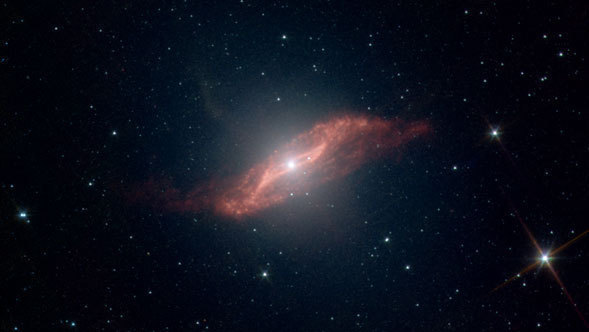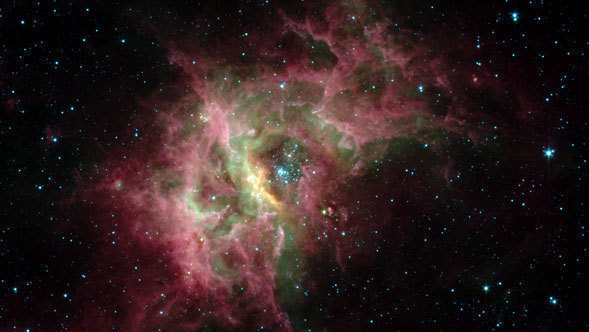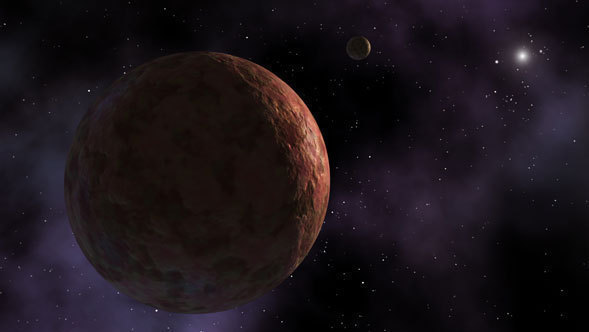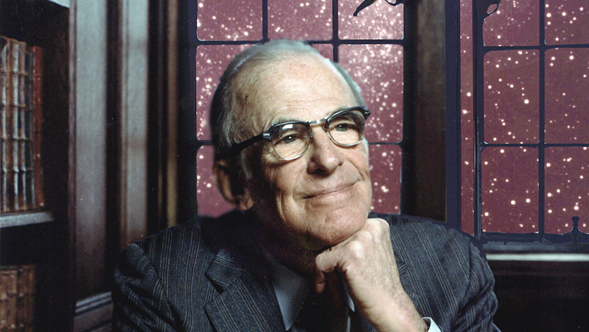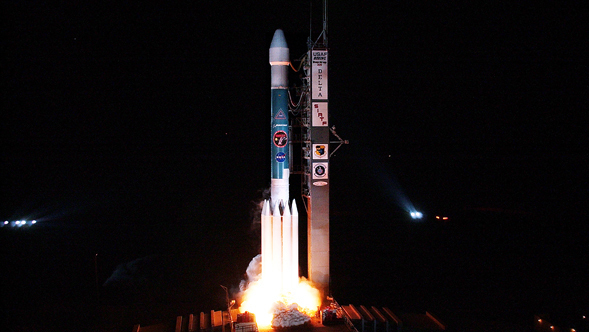Displaying news 571 - 587 of 587 in total
What would our Milky Way galaxy look like if we could travel outside it and snap a picture? It might look a lot like a new image by NASA's Spitzer Space Telescope of a spiral galaxy called NGC 7331 -- a virtual twin of our Milky Way.
Astronomers unveiled the deepest images from NASA's new Spitzer Space Telescope today and announced the detection of distant objects -- including several supermassive black holes -- that are nearly invisible in even the deepest images from telescopes operating at other wavelengths.
Peering into the "gut" of the galaxy Centaurus A, NASA's Spitzer Space Telescope has captured in unprecedented detail this massive galaxy's last big meal: a spiral galaxy twisted into a parallelogram-shaped structure of dust.
Ten years ago, a group of astronomers set out to find invisible, or dark, matter in the outer fringes of our galaxy. Now, NASA's Spitzer Space Telescope has set its infrared eyes on this mystery matter and verified that at least one of 17 invisible objects observed years ago lies within the body of our Milky Way galaxy.
NASA has announced new findings from the Spitzer Space Telescope, including the discovery of significant amounts of icy organic materials sprinkled throughout several "planetary construction zones," or dusty planet-forming discs, which circle infant stars.
Like a philanthropist donating a prized collection to a museum, NASA's Spitzer Space Telescope has opened a virtual vault rich with scientific data. The Spitzer Science Archive now provides astronomers access to the infrared telescope's data well before the mission's one-year anniversary in space.
Hidden behind a curtain of dusty darkness lurks one of the most violent pockets of star birth in our galaxy. Called DR21, this stellar nursery is so draped in cosmic dust that it appears invisible to the human eye.
NASA-funded researchers have discovered the most distant object orbiting Earth's Sun. The object is a mysterious planet-like body three times farther from Earth than Pluto.
In a small nearby galaxy lies a luminous cloud of gas and dust, called a nebula, which houses a family of newborn stars. If not for the death of a massive star millions of years ago, this stellar nursery never would have formed.
Aviation Week & Space Technology magazine has honored the teams that built NASA's new Spitzer Space Telescope with a 2003 Aerospace Laurel award. The awards, now in their 47th year, recognize outstanding achievements in the global field of aerospace.
Out of the dark and dusty cosmos comes an unusual valentine -- a stellar nursery resembling a shimmering pink rosebud. This cluster of newborn stars, called a reflection nebula, was captured by state-of-the-art infrared detectors onboard NASA's new Spitzer Space Telescope, formerly known as the Space Infrared Telescope Facility.
A dusty stellar nursery shines brightly in a new image from NASA's Spitzer Space Telescope, formerly known as the Space Infrared Telescope Facility. Spitzer's heat-sensing "infrared eyes" have pierced the veiled core of the Tarantula Nebula to provide an unprecedented peek at massive newborn stars.
NASA Administrator Sean O'Keefe today announced that NASA's Space Infrared Telescope Facility has been renamed the Spitzer Space Telescope. It was named in honor of the late Dr. Lyman Spitzer Jr., one of the 20th century's most distinguished scientists.
A new window to the universe has opened with today's release of the first dazzling images from NASA's newly named Spitzer Space Telescope, formerly known as the Space Infrared Telescope Facility.
NASA's Space Infrared Telescope Facility successfully launched from Florida's Cape Canaveral Air Force Station aboard a Delta II launch vehicle. The space telescope will use infrared detectors to pierce the dusty darkness enshrouding many of the universe's most fascinating objects.
A NASA observatory will soon open a new window to the universe. By using infrared technology to study celestial objects that are either too cool, too dust-enshrouded or too far away to otherwise be seen, NASA's Space Infrared Telescope Facility will pierce the thick dust that permeates the universe.
The Space Infrared Telescope Facility arrived today at the Kennedy Space Center to begin final preparations for its launch next month aboard a Boeing Delta II rocket. The observatory was shipped to Florida from the Lockheed Martin plant in Sunnyvale, Calif.
Displaying news 571 - 587 of 587 in total


